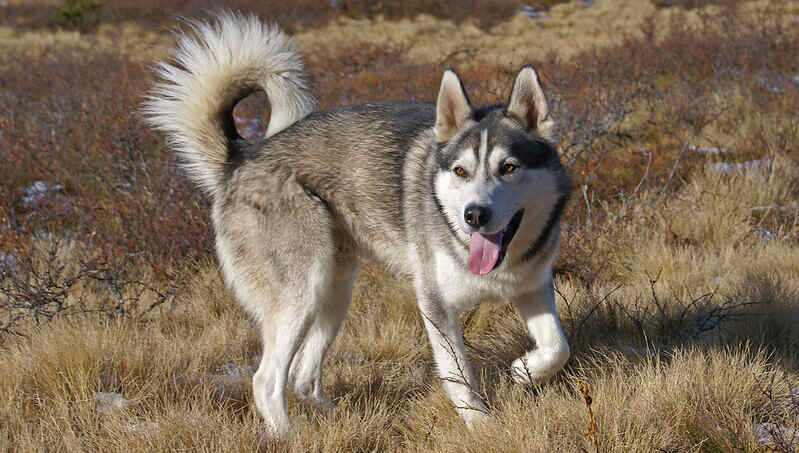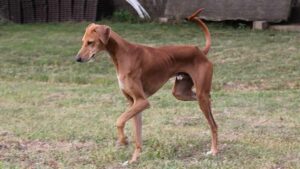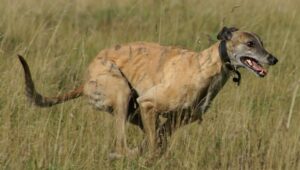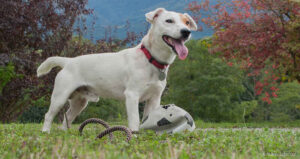The Siberian Husky is a breed of dog that was originally bred as a sled dog by the Chukchi people of northeastern Siberia. Known for its stunning appearance, intelligence, and endurance, the Siberian Husky has become a popular family pet and working dog breed around the world.
Brief History of the Siberian Husky
The Siberian Husky’s history can be traced back to the Chukchi people, a semi-nomadic tribe that lived in the northeastern region of Siberia. These people relied on their dogs for transportation, hunting, and companionship in the harsh Arctic environment. The dogs were bred for their endurance, strength, and ability to work in teams, pulling sleds over long distances.
In the early 20th century, during the Alaskan gold rush, these dogs were brought to Alaska and played a crucial role in the delivery of mail and supplies. They became more popular after the 1925 serum run to Nome, where a team of Siberian Huskies and their drivers transported life-saving diphtheria serum over 674 miles in just five and a half days.
Siberian Husky at a Glance
| Attribute | Description |
|---|---|
| Height | Male: 21–23.5 inches (53–60 cm) Female : 20–22 inches (51–56 cm) |
| Weight | Male: 45–60 pounds (20–27 kg) Female 35–50 pounds (16–23 kg) |
| Life Expectancy | 12-15 years |
| Origin | Siberia |
| Group | Working |
| Coat Type | Double coat |
| Energy Level | High |
| Trainability | Moderate |
Appearance
The Siberian Husky is a medium-sized breed, muscular build, a bit smaller in size compared with the Alaskan Malamute . As spitz breeds, they have a thick double coat that comes in a variety of colors, including black, white, gray, copper, and red. Their distinctive facial markings, such as the “mask” and “spectacles” around their eyes, add to their striking appearance. Siberian Huskies have erect triangular ears, a well-furred tail that curves over their back, and a medium-length muzzle.
Temperament
Siberian Huskies are known for their friendly, outgoing, and energetic personalities. They are affectionate with their families but can be reserved with strangers. This breed has a strong prey drive and may chase smaller animals, so early socialization and training are essential. Huskies are independent thinkers and can be stubborn at times, requiring patience and consistency during training.
Health
Generally, Siberian Huskies are a healthy breed with a lifespan of 12 to 15 years. However, like all breeds, they are susceptible to certain health issues, including hip and elbow dysplasia, eye problems (such as cataracts and progressive retinal atrophy), and skin allergies. Regular veterinary check-ups and responsible breeding practices can help minimize these risks.
Adaptability
Siberian Huskies are highly adaptable dogs and can thrive in various living situations, including apartments, as long as their exercise and mental stimulation needs are met. They are well-suited for active families who can provide them with plenty of outdoor activities and playtime. However, Huskies have a strong prey drive and a tendency to wander, so they should be kept in a securely fenced area or on a leash when outdoors.
Grooming
Siberian Huskies have a thick double coat that sheds heavily, especially during seasonal changes. Regular brushing, at least once a week, is necessary to manage shedding and prevent matting. They only require occasional baths when necessary, as over-bathing can strip their coat of natural oils. Trimming their nails and cleaning their ears regularly are also important grooming tasks.
Nutrition
Siberian Huskies have a high energy requirement due to their active nature and working dog heritage. They should be fed a high-quality, nutrient-dense diet formulated for their life stage and activity level. Portion sizes should be carefully monitored to prevent obesity, as Huskies are prone to overeating. Providing them with plenty of exercise and mental stimulation can also help regulate their appetites and maintain a healthy weight.
Training
Training Siberian Huskies requires patience, consistency, and positive reinforcement techniques. They are intelligent and eager to learn but can be independent and easily distracted. Early socialization and obedience training are crucial to establish a strong bond and prevent behavioral issues. Huskies excel in various activities, such as agility, sledding, skijoring, and weight-pulling competitions, which can provide them with mental and physical challenges.
Quick Facts
- Siberian Huskies were originally bred by the Chukchi people of Siberia as sled dogs.
- They were instrumental in the 1925 serum run to Nome, Alaska, which saved the town from a diphtheria epidemic.
- Huskies have a high energy level and require plenty of daily exercise and mental stimulation.
- They are known for their distinctive facial markings and a wide range of coat colors.
- Siberian Huskies are generally good with children but may have a high prey drive towards smaller pets.
Siberian Husky Mix

German Shepherd Siberian Husky Mix
The German Shepherd Siberian Husky Mix, also known as the Gerberian Shepsky, is a hybrid breed that combines the intelligence and loyalty of the German Shepherd with the endurance and friendly nature of the Siberian Husky. This mix is often sought after for its striking appearance, versatility, and potential as a working dog or active companion.

Siberian Husky Pitbull Mix
The Siberian Husky Pitbull Mix, sometimes called the Husky Pit, is a unique crossbreed that blends the energy and friendliness of the Siberian Husky with the strength and determination of the Pitbull. This mix can make an excellent family pet and companion dog for active households, provided they receive proper training, socialization, and exercise.
Siberian Husky Golden Retriever Mix
The Siberian Husky Golden Retriever Mix, known as the Husky Golden, is a hybrid breed that combines the intelligence and gentle nature of the Golden Retriever with the energy and striking appearance of the Siberian Husky. This mix is often sought after for its potential as a family companion, outdoor adventure partner, and therapy dog.
Siberian Husky Variations

Miniature Siberian Husky
The Miniature Siberian Husky is a smaller version of the standard Siberian Husky breed. While not an officially recognized breed, these dogs are often the result of selectively breeding smaller Huskies. They retain the characteristic appearance and temperament of the Siberian Husky but in a more compact size, making them suitable for apartment living or families with limited space.

White Siberian Husky
The White Siberian Husky is a stunning variation of the breed, characterized by its pure white coat. While not a separate breed, these dogs are born from parents carrying the recessive gene for white coloration. White Huskies have the same temperament and characteristics as their colored counterparts but often stand out for their striking appearance and icy blue or heterochromatic eyes.

Red Siberian Husky
The Red Siberian Husky is a beautiful variation of the breed, known for its rich, copper-red coat color. While not a separate breed, these dogs are born from parents carrying the recessive gene for red coloration. Red Huskies have the same temperament and characteristics as other Siberian Huskies but are often sought after for their unique and striking appearance.
Siberian Husky as a Pet
Siberian Huskies have become increasingly popular as family pets due to their friendly personalities, striking appearance, and energetic nature. However, owning a Siberian Husky requires a significant commitment and understanding of the breed’s unique characteristics and needs.
Siberian Huskies are known for their high energy levels and exercise requirements. They were originally bred as sled dogs, which means they have an innate desire to run, pull, and engage in physical activities. Owners must be prepared to provide their Husky with plenty of daily exercise, such as long walks, runs, hikes, or participation in dog sports like agility or mushing. Without sufficient physical and mental stimulation, Huskies may become destructive, develop behavioral issues, or engage in excessive barking or digging.
Despite their reputation as friendly and affectionate dogs, Siberian Huskies can be independent and challenging to train. They are intelligent but can be stubborn and easily distracted, making consistent training and socialization essential from an early age. Positive reinforcement techniques and patience are key when training a Husky.
Siberian Huskies are known for their strong prey drive, which means they may chase and pursue smaller animals, such as cats, rabbits, or squirrels. This instinct should be considered if you have other pets in your household or if you plan to take your Husky to areas where small animals may be present.
Grooming is another essential aspect of owning a Siberian Husky. Their thick double coat sheds heavily, especially during seasonal changes. Regular brushing and grooming are necessary to manage shedding and prevent matting. Additionally, Huskies are prone to digging and may escape from yards or homes if not properly secured, so providing them with a secure and fenced area is crucial.

Siberian Husky Price
The price of a Siberian Husky puppy can vary depending on various factors, such as the breeder’s reputation, the puppy’s lineage, and the location. On average, you can expect to pay between $600 and $1,500 for a Siberian Husky puppy from a reputable breeder. However, prices can range from $300 to $2,000 or more, depending on the specific circumstances.
It’s essential to research and find a responsible breeder who follows ethical breeding practices, screens for health issues, and provides proper documentation and health guarantees. Reputable breeders invest significant time and resources into their breeding programs, which is reflected in higher prices.
Frequently Asked Questions about Siberian Huskies
- Are Siberian Huskies good with children? Siberian Huskies are generally good with children, especially if they are raised together and properly socialized. However, their high energy levels and prey drive should be considered, and supervision is recommended when introducing them to young children.
- Do Siberian Huskies shed a lot? Yes, Siberian Huskies are known for their heavy shedding, especially during seasonal changes. Regular grooming and brushing are essential to manage their shedding.
- Are Siberian Huskies good apartment dogs? Siberian Huskies can adapt to apartment living, but they require a significant amount of daily exercise and mental stimulation. Without proper outlets for their energy, they may become destructive or develop behavioral issues.
- Do Siberian Huskies bark a lot? Siberian Huskies are generally not excessive barkers, but they may howl or vocalize more than other breeds. Proper training and exercise can help manage their vocalizations.
- Are Siberian Huskies good escape artists? Yes, Siberian Huskies are known for their ability to escape from yards or homes if not properly secured. They have a strong wanderlust and may dig or jump over fences if not provided with enough physical and mental stimulation.
- Do Siberian Huskies get along with other pets? Siberian Huskies can get along with other pets, especially if they are raised together and properly socialized. However, their prey drive should be considered, and supervision is recommended when introducing them to smaller animals.
- Are Siberian Huskies easy to train? Siberian Huskies can be challenging to train due to their independent nature and tendency to be easily distracted. Consistent, positive reinforcement training from an early age is essential for success.
- Are Siberian Huskies hypoallergenic? No, Siberian Huskies are not considered hypoallergenic. Their thick double coat sheds heavily, which can be problematic for people with allergies.





